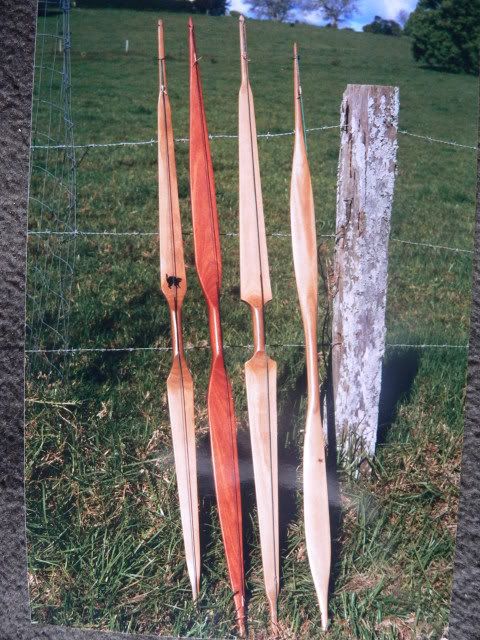#6
Post
by yeoman » Mon May 22, 2006 9:52 am
Timmah,
congratulations on deciding to make a selfbow. As far as I can tell, no one ever wants to make 'just one' though, so be prepared.
Floorboards are thick enough to make a bow. It is possible to go as thin as 15mm, depending on the wood, and glue on an extra bit in the middle to make the handle thicker. If possible though, try to get 19mm or thicker. For a bow, especially your first, you won't need any wider than 40-50mm.
As far as tools go, you won't need a great number, but generally, the fewer the tools, the longer it takes. Don't think of this as a drawback, however, as the first few should be made at an amble, because rushing things can quickly lead to broken bows.
This is the minimum tool kit that I would recommend, budget permitting:
250mm Stanley Surform or Trojan Surshape woodworking tool.
Hacksaw.
Wide chisel.
Hammer.
1/2 round rasp.
1/2 round file.
Sandpaper.
Vice or shaving horse. (It's far mor likely that you'll have a vuce than a shaving horse I'm sure.)
In fact, not only is this my minimum list, it is my current list of tools in my toolbox, plus a power planer, and can quite capably make bows with them alone.
As for wood, I believe that Jarrah would make a beautiful bow, buty in my experience, it is more sensitive to grain orientation than other woods. This isn't a great problem though, as I recommend that beginners back their first few bows, just to increase the safety.
It is possible to use local hardware shop timber. Go for the heaviest, darkest colored boards if the timber happens to be labelled with some erroneous title like 'Australian Ash' or 'Australian Hardwood'. Apart from Jarrah, what other positively identified timbers do you have access to?
I have to go soon, so I'll have to leave it there for now, and do another post later talking about what exactly to look for in a board to make a bow from.
Sorry I couldn't put in all in one post, but I gotta dash.
Cheers,
Dave

